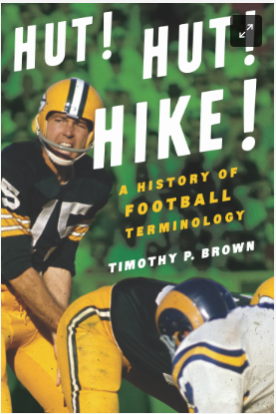Marian Hossa Hockey HOF Scoring Wizard
Early Brilliance:
His early years with the Senators were marked by explosive offensive prowess. He quickly established himself as a scoring machine, netting 52 goals in his third season and becoming a fan favorite. He honed his signature silky smooth skating and pinpoint shooting, earning comparisons to the legendary Peter Šťastný.
Championship Pedigree:
Hossa's journey then saw him embark on a quest for ultimate glory, acquiring a championship pedigree along the way. He lifted the Stanley Cup with the Chicago Blackhawks in 2010, 2013, and 2015, solidifying his place as one of the league's most clutch performers. His knack for rising to the occasion in the playoffs remains etched in the memories of Blackhawks fans forever.
Record-Breaking Achievements:
Throughout his career, Hossa's talent translated into an impressive collection of accolades. He surpassed the 500-goal mark, a testament to his consistency and longevity. He also reached the 1,000-point milestone, further cementing his legacy as an elite offensive talent.
Enduring Legacy:
Though injuries forced him to retire in 2017, Hossa's impact on the game continues to resonate. His elegant skating style and offensive wizardry inspired countless young players. His unwavering dedication and leadership left a lasting impression on his teammates. In 2020, he was rightfully inducted into the Hockey Hall of Fame, a true testament to his greatness.
Larry Murphy A Hall of Fame Defenseman with a Trophy Collection
Larry Murphy and Paul Coffey in 2008 at last game in the Igloo, Credit Michael Miller
Early Career and Record-Breaking Debut (1980-1985):
-Drafted by the Los Angeles Kings in 1980, Murphy made a sensational debut, setting rookie records for points (76) and assists (60) by a defenseman, a feat that still stands today.
-Despite his impressive individual performance, the Kings struggled to find consistent team success during his tenure.
Building a Legacy Across Teams: Minnesota, Pittsburgh, and Toronto (1985-1996):
-After stints with the Minnesota North Stars and Washington Capitals, Murphy found his championship calling with the Pittsburgh Penguins in 1989.
-Partnered with fellow defenseman Paul Coffey, Murphy formed a potent offensive duo, contributing significantly to the Penguins' back-to-back Stanley Cup victories in 1991 and 1992.
A Change of Scenery and More Championships: Detroit and a Legacy Cemented (1996-2001):
-In 1996, Murphy was traded to the Detroit Red Wings, forming another iconic defensive partnership with Nicklas Lidström.
-His veteran leadership and offensive contributions proved instrumental in the Red Wings' Stanley Cup triumphs in 1997 and 1998, solidifying his reputation as a player who elevated any team he joined.
Clark Gillies Key Piece of the Islanders' Dynasty
Early Career and Arrival on the Island (1974-1979):
-Drafted by the Islanders in 1974, Gillies quickly established himself as a force to be reckoned with. His imposing 6'3" frame and physical play made him a nightmare for opposing teams.
-While not known for dazzling displays of individual skill, Gillies possessed a lethal slap shot and a knack for finding the net. He consistently put up impressive scoring numbers, exceeding 30 goals in five seasons with the Islanders.
A Cornerstone of the Dynasty Years (1979-1983):
-Gillies' impact transcended his own scoring prowess. He formed a potent line with Bryan Trottier and Mike Bossy, dubbed the "Trio Grande," terrorizing defenses across the league.
-Their combination of offensive firepower and relentless work ethic was instrumental in the Islanders' dominance during their four-peat Stanley Cup run (1980-1983).
-Gillies' leadership and ability to elevate his teammates' play solidified his position as a core member of the dynasty.
Later Career and Legacy (1983-1988):
-Following the Islanders' championship run, the team faced a period of transition. Though Gillies remained a valuable contributor, injuries and the departure of key players impacted the team's overall success.
-In 1986, Gillies was claimed by the Buffalo Sabres via waivers, where he played for two seasons before retiring in 1988.
The NHL.com bio of Clark Gillies, legendary left wing of the New York Islanders. Born April 7, 1954, in Moose Jaw, Saskatchewan, was Hockey Hall of Fame Left Wing Clark Gillies. Gillies was the epitome of a strong power forward. He was a key player for the New York Islanders when they won four straight Stanley Cup championships from 1980-83. Gillies is one of the top NHL players to have worn the Number 9 jersey.
The Quiet Captain Who Conquered the Diamond
Born in Rhode Island, Collins' career bloomed in Boston. Traded from St. Louis in 1901, he found his true home at Fenway Park. His batting average, consistently hovering around .300, might not scream greatness, but it concealed a quiet mastery of the game. He had a surgeon's precision at the plate, peppering line drives and finding gaps with uncanny accuracy. He rarely struck out, a testament to his patience and baseball IQ.
But Collins' impact transcended mere statistics. He was a defensive wizard at third base, his nimble hands and lightning-fast throws making him a wall against grounders. He orchestrated the infield with the grace of a conductor, calling plays and directing traffic with unerring instincts. His calm demeanor brought stability, grounding the team even in the stormiest of games.
He wasn't just a skilled player; he was a natural leader. Nicknamed "Big Brother" for his quiet guidance, he nurtured young teammates, instilling in them the Red Sox way. He spoke with his actions, leading by example with his tireless work ethic and unyielding determination. His quiet confidence resonated through the dugout, a pillar of strength in the face of adversity.
Collins' legacy isn't measured in flashy awards or gaudy headlines. He led the Red Sox to two World Series appearances, but his truest impact lies in the countless games where his steady hand calmed nerves, his clutch hit lit a spark, or his defensive brilliance saved the day.
Jim Edmonds
Paul Waner Legend of the Line Drive
Waner's professional journey began in 1926 with the Pittsburgh Pirates. He quickly established himself as a force to be reckoned with, leading the league in batting average in his second season at a staggering .380. This offensive outburst was just the beginning, as Waner would go on to win two more batting titles throughout his career, solidifying his reputation as one of the game's finest hitters.
Unlike the "dead ball" era that preceded him, Waner thrived in the "lively ball" era of the 1920s and 30s. His approach to hitting was a study in precision. He possessed a keen understanding of the strike zone and a remarkable ability to put the bat on the ball consistently. This resulted in an astounding eight seasons with over 200 hits, a feat rarely seen today. Waner wasn't just a singles hitter either, accumulating a healthy amount of doubles and triples, showcasing his well-rounded offensive skillset.
Beyond his offensive prowess, Waner was a valuable asset defensively. Patrolling centerfield with grace and agility, he combined excellent range with a strong throwing arm, making him a complete package on the field.
Waner's dedication to the game was legendary. His tireless work ethic and meticulous preparation earned him the respect of his teammates and the admiration of fans. He even displayed remarkable longevity, playing a remarkable 20 seasons, a testament to his dedication and physical conditioning.
In 1942, Waner achieved a milestone coveted by all hitters – joining the prestigious 3,000-hit club. His final career batting average of .333 stands as a lasting testament to his brilliance at the plate. His induction into the National Baseball Hall of Fame in 1952 further cemented his place among baseball's elite.
Born April 16, 1903, in Harrah, OK, was Baseball Hall of Fame Right Fielder, Paul Waner. for four teams between 1926 and 1945, most notably playing his first 15 seasons with the Pittsburgh Pirates.
Paul also played for the Brooklyn Dodgers (1941 and 1943–1944), Boston Braves (1941–1942), and the New York Yankees (1944–1945). The greatest Pirate outfielder up to his retirement, he won the 1927 NL Most Valuable Player Award in his second season. Paul Waner batted 0.333 for his career, had an On Base percentage of 0.473, with 113 career Home Runs. Waner was one of the top MLB players to have worn the Number 9 Jersey.
Bullet Rogan Baseball Hall of Fame Arm
Born July 28, 1893, in Oklahoma City, Oklahoma, was Baseball Hall of Fame Pitcher, Outfielder, and Manager Wilbur "Bullet" Rogan. Bullet Rogan was an American Negro League baseball pitcher and manager. He is considered one of the greatest pitchers in Negro League history.
Rogan's early baseball career took place in the U.S. Army, where he played for a famous team in the all-black 25th Infantry. After joining the Kansas City Monarchs, he was the top pitcher and one of the best hitters on a team that won three pennants from 1923 to 1925 and the 1924 Colored World Series.
He became a playing manager in 1926 and led his team to another league title in 1929. Rogan was a smart pitcher with a wonderful memory. He never forgot a batter's weaknesses and strong points. His fastball was almost too fast to catch, and he was also a skilled curveball pitcher. Rogan was inducted into the Baseball Hall of Fame in 1998.
Bill Foster Baseball Hall of Fame Pitcher
Dave Keon A Look at The Reign of "King" Keon's Hockey Legacy
-Early Promise and a Winning Mentality
Born in 1940, Keon's talent was evident from a young age. He honed his skills playing on outdoor rinks in his hometown of Sudbury, Ontario, developing a signature combination of speed and physicality. Drafted by the Toronto Maple Leafs in 1960, Keon quickly rose through the ranks, earning the Calder Trophy as the league's top rookie in his first season. His arrival coincided with the dawning of a golden era for the Maple Leafs.
-A Pillar of the Toronto Maple Leafs Dynasty
Alongside teammates like Frank Mahovlich and Johnny Bower, Keon formed the core of a dominant Maple Leafs team in the early 1960s. His relentless work ethic and two-way play were instrumental in the team's success. Keon was a force on the forecheck, hounding opponents and creating turnovers. Offensively, his speed and agility made him a constant threat, and he emerged as a top scorer for the Leafs. This culminated in four Stanley Cup victories for the Maple Leafs between 1962 and 1967, solidifying Keon's legacy as a champion.
-Individual Accolades and Unwavering Leadership
Beyond team success, Keon's individual brilliance shone through. He won the Lady Byng Trophy twice, awarded to the player who best combines sportsmanship and excellence. Despite his fierce competitiveness, Keon was known for his clean play, earning respect from both teammates and opponents. He was also recognized for his leadership qualities, captaining the Maple Leafs for several seasons.
Bailey Howell's Legacy of Consistency
Emerging from Mississippi State as a unanimous All-American, Howell's journey began with the Detroit Pistons in 1959. There, he quickly established himself as a force, averaging a double-double in points and rebounds for his first six seasons. His smooth athleticism and precise shooting made him a scoring threat from anywhere on the court, while his defensive awareness and relentless hustle anchored the Pistons' back line.
His peak came in the 1960s, where he cemented his reputation as a champion and an All-Star regular. He moved to the Baltimore Bullets and later the Boston Celtics, playing alongside legends like Elgin Baylor and Bill Russell. While not the first scorer on the team, Howell was the glue, the dependable player who could be counted on for a solid performance night after night. His quiet leadership and unwavering work ethic earned him the respect of teammates and coaches alike.
His accolades speak for themselves: six All-Star appearances, two NBA championships, and even a brief stint as head coach of the Philadelphia 76ers. But statistics cannot fully capture Howell's essence. He wasn't flashy, didn't crave the spotlight, yet his consistency and professionalism made him a cornerstone of some of the league's most successful teams.



.jpg?https://jerseydispatch.com/pfeL/p/c312642c0431e75b485e432232c99c1c/website/Daily-Sports-Uniform-Number-History/February/February-8-Jersey-Numbers/Images/.Basketball_at_Pas-en-Artois,_France,_1918_(20166469838).jpg)
.jpg?https://jerseydispatch.com/pfeL/p/c312642c0431e75b485e432232c99c1c/website/Sports-History-Photo-of-the-Day/February-Images/February-8-Image/images/.640px-Arctic_Sisterhood_Basketball_banner,_Nome_(NOWELL_200).jpg)





